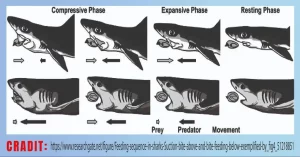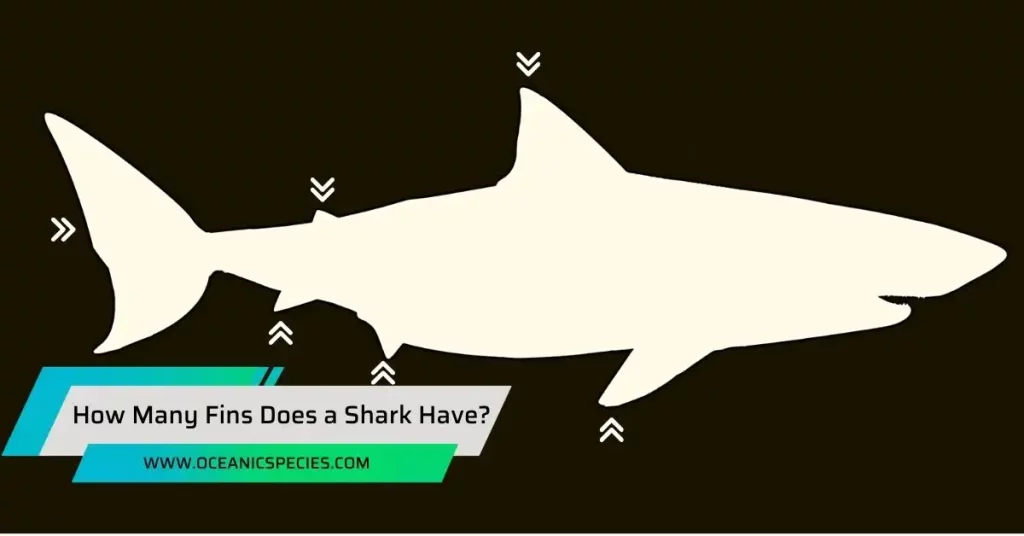Lemon sharks mainly eat fish and smaller sharks. In addition, they also consume crustaceans and other marine animals.
Lemon sharks have a varied diet consisting primarily of fish and smaller sharks. They are opportunistic feeders, meaning they will eat whatever is readily available in their environment. Some of their favorite fish include mullet, catfish, groupers, and snappers. Lemon sharks also have a taste for smaller shark species, such as blacktip and bonnethead sharks.
However, their diet is not limited to just fish and sharks. These sleek predators also enjoy consuming crustaceans like crabs, shrimp, and lobster, as well as other marine animals like squid and octopus. With such a diverse menu, lemon sharks are skilled hunters that ensure they have a plentiful supply of food to sustain their energy levels and growth.
Keep reading to explore more interesting facts.
Feeding Habits And Strategies Employed By Lemon Sharks
By employing certain strategies, they are able to satisfy their hunger and maintain a balanced diet. Let’s take a closer look at the following.

Feeding Habits
Lemon sharks showcase a diverse diet that primarily consists of smaller fish, crustaceans, and cephalopods. They have a preference for bottom-dwelling species, but they are also known to venture into shallower waters for feeding. These sharks are opportunistic predators, meaning they will consume any available prey in their environment.
Key Points
- Lemon sharks primarily prey on fish species such as mullet, jacks, groupers, and snappers. They utilize their powerful jaws and sharp teeth to catch and disable their prey.
- In addition to fish, these sharks also feed on crustaceans like crabs and lobsters. Their strong sense of smell and keen vision enables them to detect these prey items hidden in their natural habitats.
- Lemon sharks are skilled hunters and implement a unique hunting strategy called “bite and wait.” They will typically bite their prey once to immobilize it and then patiently wait for it to weaken before consuming it.
- These sharks also scavenge for carrion, which includes any dead or decaying animal matter they may come across. This scavenging behavior allows them to take advantage of additional food sources and maximize their chances of survival.
- Lemon sharks have a highly efficient digestive system that allows them to extract the maximum amount of nutrients from their food. This contributes to their overall energy levels and ability to thrive in their marine ecosystem.
Diet Of Lemon Sharks
Lemon sharks, scientifically known as Negaprion brevirostris, have a diverse and varied diet that reflects their opportunistic feeding behavior. Let’s delve into the key points about the diet of lemon sharks:
- Lemon sharks are classified as carnivorous, primarily feeding on a diet consisting of bony fish, cephalopods, crustaceans, and, occasionally, other sharks. They are known to consume a wide range of prey species, and their feeding habits can vary depending on availability and location.
- Fish make up a significant portion of a lemon shark’s diet. These sharks are known to feast on various species of fish, such as mullet, catfish, jacks, and stingrays. They are skilled predators, often ambushing their prey with quick bursts of speed and precision.
- In addition to fish, lemon sharks also feed on cephalopods like squids and octopuses. Their strong jaws and sharp teeth allow them to capture and consume these soft-bodied creatures efficiently. Cephalopods offer a valuable food source, especially for lemon sharks residing in areas where these species are abundant.
- Crustaceans, including crabs and lobsters, are another dietary component for lemon sharks. These marine arthropods provide essential nutrients and are part of the shark’s balanced diet. Lemon sharks use their serrated teeth to crush the shells of crustaceans, accessing the soft flesh inside.
- It is worth noting that lemon sharks are not exclusively predators, as they occasionally scavenge for carrion and actively search for dead animals to feed on. This scavenging behavior helps them make use of available resources and sustain their nutritional needs.
The Role Of Lemon Sharks As Top Predators In Maintaining Ecosystem Balance
Lemon sharks play a crucial role as top predators in the marine ecosystems they inhabit. As apex predators, they have a significant influence on the overall balance and health of their habitats. Let’s take a closer look at the key points that highlight their importance in maintaining ecosystem balance:

- Regulation of prey populations: Lemon sharks help regulate the populations of their prey species. They primarily feed on various types of fish, including bony fish and cephalopods, such as squid. By controlling the abundance of these prey species, they prevent overpopulation, which can lead to adverse effects on the ecosystem.
- Restoring natural order: As top predators, lemon sharks help restore the natural order within their marine habitats. By predating on smaller fish and other organisms, they help maintain a balanced food chain. This prevents any one species from dominating or becoming too scarce, fostering a harmonious ecosystem.
- Enhancement of biodiversity: Lemon sharks contribute to the overall biodiversity of their habitats. By preying on different species, they prevent any one species from becoming too dominant. This creates opportunities for other organisms to thrive, leading to a diverse and resilient ecosystem.
- Strengthening coral reefs: Lemon sharks indirectly contribute to the health of coral reefs, which are vital marine ecosystems. By preying on herbivorous fish species that graze on coral, they prevent excessive grazing and damage to the reefs. This ensures the survival and growth of coral reefs, which in turn support countless other marine organisms.
- Nutrient cycling: Lemon sharks play a role in nutrient cycling within marine ecosystems. When they consume prey species, they effectively transfer nutrients within the system. This allows for the redistribution and recycling of vital nutrients, further supporting the overall health and productivity of the ecosystem.
The Key Food Sources In The Diet Of Lemon Sharks
Lemon sharks are known for their unique and varied diet. These large sharks primarily feed on a wide range of prey, from fish to crustaceans. Let’s explore the key food sources in the diet of lemon sharks:
Fish: The Main Course
- Lemon sharks predominantly rely on fish as their primary food source.
- They have a preference for bony fish, such as mullet, grouper, and herring.
- Juvenile lemon sharks mainly consume smaller fish species, gradually transitioning to larger prey as they grow.
- Their exceptional hunting skills enable them to capture swift-moving fish with ease.
Crustaceans: A Tasty Treat
- Alongside fish, crustaceans form an essential part of the lemon shark’s diet.
- Crabs, lobsters, and shrimp are some of the crustaceans they actively seek out.
- These bottom-dwelling creatures provide a nutritious and protein-rich meal for the lemon sharks.
- With their robust jaws and sharp teeth, they adeptly crush the shells of crustaceans to extract their tasty morsels.
Cephalopods: Delicacies From The Deep
- Lemon sharks also include cephalopods in their diet, relishing the opportunity to devour these marine creatures.
- Squid and octopus are the cephalopods commonly consumed by lemon sharks.
- These soft-bodied animals offer a significant source of nutrients, including proteins and essential fatty acids.
Other Prey: Opportunistic Eaters
- Lemon sharks display opportunistic feeding behavior, meaning they take advantage of any easily accessible food sources.
- They are known to consume smaller sharks, rays, and even seabirds if the opportunity arises.
- Carrion, or dead and decaying animals, also become a potential meal for lemon sharks.
Versatility In Diet
- The versatile diet of lemon sharks allows them to adapt to various marine ecosystems.
- They have been observed in both shallow coastal waters and deeper offshore regions, showcasing their ability to find food in diverse habitats.
- The lemon shark’s adaptable diet ensures their survival in a changing environment, making them highly resilient predators.
The Seasonal Changes In Lemon Shark Diet
Lemon sharks are known to have a diverse diet that changes with the seasons. Understanding these seasonal changes can provide valuable insights into the behavior and feeding habits of these fascinating creatures. Here, we will explore the key points regarding the seasonal changes in the lemon shark diet.
Feeding Habits During The Winter Months
During the winter months, lemon sharks exhibit specific feeding habits that are influenced by several factors. Here are the key points to note:
- Lemon sharks tend to stay closer to their winter habitats, such as shallow coastal waters and estuaries.
- Their diet primarily consists of small fish species that are readily available in these areas, including mullet, catfish, and herring.
- The abundance of these prey species allows the lemon sharks to feed regularly, ensuring their survival during the colder months.
Spring Diet Preferences
As the seasons transition into spring, lemon sharks exhibit changes in their diet preferences. Here are the key points to understand:
- With the arrival of spring, lemon sharks begin venturing out into deeper waters in search of larger prey.
- Their diet expands to include a wide range of marine organisms, such as crabs, lobsters, and squid.
- This shift in diet is primarily driven by the increased availability of these prey species during the spring season, providing the lemon sharks with a diverse and nutritious food source.
Summer Feeding Frenzy
Summer brings about a feeding frenzy for lemon sharks as they take advantage of the abundance of food resources. Here are the key points to consider:
- Lemon sharks become more opportunistic feeders during the summer months, targeting various types of fish, including groupers, snappers, and jacks.
- They also display a unique feeding behavior known as “ram feeding,” where they swim swiftly towards their prey, using their powerful jaws to capture and consume it.
- The warm waters of summer provide optimal conditions for both the lemon sharks and their prey, resulting in an increased feeding activity.
Diet Adaptations In The Fall
As fall approaches, lemon sharks undergo further dietary adaptations in preparation for the upcoming winter. Here are the key points to note:
- Lemon sharks gradually shift their feeding grounds back to shallower waters, where they can find smaller fish species in abundance.
- Their diet returns to a more fish-dominated menu, including species like anchovies, sardines, and small mackerels.
- This dietary shift allows the lemon sharks to build up their energy reserves before the onset of colder temperatures.
Physical Characteristics And Habitat Preferences Of Lemon Sharks
Lemon sharks have distinct physical characteristics and specific habitat preferences that make them unique from their counterparts. In this section, we will explore the key aspects of lemon sharks’ physical attributes and their preferred habitats.
Physical Characteristics
Lemon sharks possess a range of physical features that enable them to thrive in their marine environment. Here are some noteworthy characteristics:

- Body shape: Lemon sharks have a slender, streamlined body shape, which aids in swift movement through the water.
- Size: Adult lemon sharks can grow up to 10 feet in length, making them relatively large sharks.
- Coloration: As their name suggests, lemon sharks have a yellowish-brown or olive coloration on their dorsal side, blending well with the sandy seabed.
- Dorsal fin: The first dorsal fin of a lemon shark is relatively large and curved, giving it a distinct look.
- Teeth: Lemon sharks have sharp, serrated teeth perfectly suited for capturing and eating their prey.
Habitat Preferences
Understanding the habitat preferences of lemon sharks is crucial to comprehend their behavior and ecological role. Here are the key points regarding lemon sharks’ preferred habitats:
- Coastal waters: Lemon sharks are predominantly found in the shallow coastal waters of the atlantic ocean, particularly in the western hemisphere.
- Sandy seabeds: These sharks exhibit a strong affinity for sandy seabeds, using their coloration to blend in and remain camouflaged.
- Nursery areas: Lemon sharks are known to use certain locations as nursery areas, where they give birth to their young and provide them with a safe environment to grow.
- Temperature and salinity: Lemon sharks prefer areas with a temperature range between 21 and 29 degrees celsius, along with a salinity of around 35 parts per thousand.
Frequently Asked Questions
Are Lemon Sharks Carnivores Or Omnivores?
Lemon sharks are carnivorous creatures, feeding exclusively on animal-based food sources found in their environment.
How Often Do Lemon Sharks Eat?
Lemon sharks typically feed every few days, adjusting their feeding patterns based on the availability of prey in their habitat.
Do Lemon Sharks Eat Other Sharks?
While occasional cannibalism has been observed, lemon sharks mostly prey on smaller fish species and rarely target other sharks.
Can Lemon Sharks Eat Humans?
Lemon sharks pose minimal threat to humans and are not known for predatory behavior towards humans. They only attack if provoked or feel threatened.
Conclusion
Understanding the diet of lemon sharks is essential in appreciating their role in the marine ecosystem. Lemon sharks primarily feed on a variety of prey, such as fish, squid, rays, and crustaceans, making them opportunistic hunters. Their ability to adapt their diet based on availability ensures their survival in different habitats.
While larger lemon sharks tend to prey on larger animals, smaller individuals target smaller fish and invertebrates. This flexibility in their diet allows lemon sharks to thrive in different environments, from coastal mangroves to open ocean waters. By maintaining a balanced food chain, these sharks contribute to the health and diversity of the marine ecosystem.





